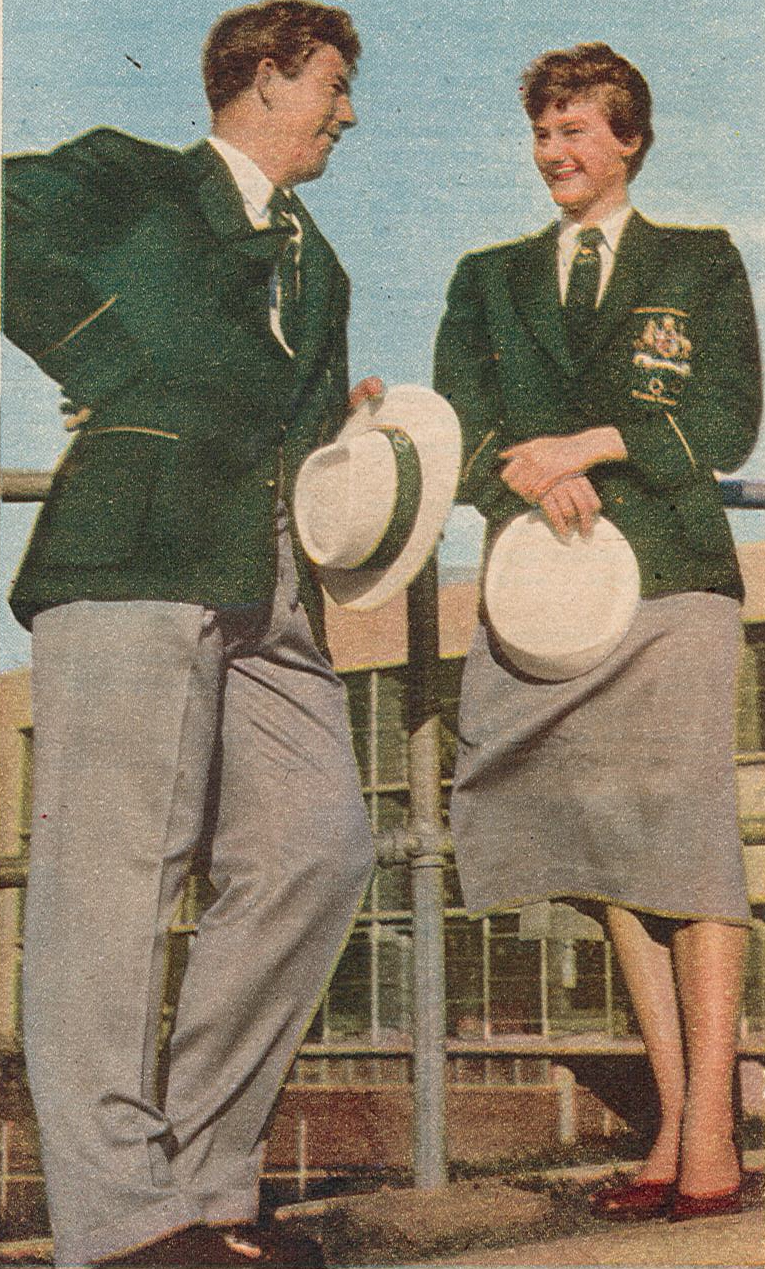Records in a diverse range of UMA collections tell the story of how collaborations between industry, business, and government prepared Melbourne to host the Olympic Games in the years leading up to 1956.


Olympic Village Heidelberg
An article published in the September 1956 edition of ‘The Australian Builder’, which is housed in the Leith & Bartlett collection, provides insight into the living arrangements of the 6000 athletes during their stay in Melbourne. The ‘Olympic Village’ was built in Heidelberg West which at the time of construction was open country. Under the direction of the Olympics Organising Committee, Housing Commission and select architects the building project was completed in 20 months transforming the site into a self-contained suburb ‘with all the amenities of a modern city’.
Harold E. Bartlett was chair of the Housing Commission of Victoria’s (HCV) Architects Panel at the time the Olympic Village was constructed in the 1950s. The official booklet produced by the HCV provides the researcher with an illustrative overview of each of the accommodation designs used. A range of dwelling types from single storey corner housing units, blocks of flats, single story brick houses, and concrete row houses were constructed and some still stand today. In a radio broadcast prior to the commencement of the games, Malcolm Fraser the Member for Wannon described the Olympic Village as ‘modern’ and the best living conditions athletes had been given to date. The image below illustrates the accommodation for eight athletes in brick units.

Sir Frank Beaurepaire
Australian captain of industry and former Lord Mayor Sir Francis ‘Frank’ Beaurepaire featured quite prominently in the initial bid to hold the games in Melbourne, the Victorian Olympic Council for the Games and the Organising Committee. At one point The Lord Mayor of Melbourne, Sir Raymond Connelly, and Sir Frank Beaurepaire teamed up to enlist support of heads of State (His Excellency the Governor, Sir Winston Dugan, and the Premier, the Honourable T. T. Hollway) for the Melbourne Games bid. They also enlisted the aid of Sir Keith Murdoch and Mr. E. A. Doyle, two Melbourne newspaper executives in a campaign to secure the selection of Melbourne as host city of the 1956 Games.
The Olympic Consolidated collection contains a number of artifacts from the various twentieth century Olympic games.
1956 Olympic Uniform
In 1956 the Australian Olympic Federation (AOF) was well aware of intense public attention associated with the outfitting of our national sporting heroes. So, in the lead up to the Melbourne Games, AOF Secretary Sir Edgar Tanner approached respected Victorian garment manufacturer Fletcher Jones with a proposal for them to produce both the men’s and women’s Olympic uniform. Fletcher Jones accepted the commission and publicly acknowledged what a great honour it was for a ‘country factory’ to be selected.
An example of the Australian uniform skirt is held at UMA and reference photographs are available for researchers to view. The photograph above shows how the skirt was worn on the athletes.

Sources
Further Reading
Barrie, Melinda. ‘The 1956 Olympics and the FJ Skirt, FJ Stories, http://www.fjstories.org.au/1956-olympics-and-fj-skirt accessed 5 January 2021.